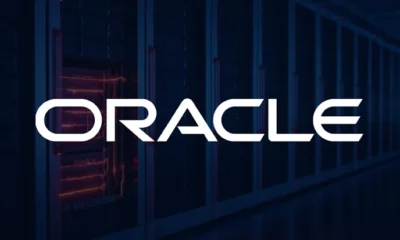Tech News
Uncovering the Hidden Risks: The Top 10 Plugins That Expose Enterprise Security Vulnerabilities

The rise of Anthropic’s Model Context Protocol (MCP) in 2025 brought about a new era of AI integration standardization, but it also unveiled a significant blind spot in enterprise cybersecurity. Recent research from Pynt highlighted the alarming network effect of vulnerabilities associated with MCP plugins, with just ten plugins creating a 92% probability of exploitation. The risk escalates even further with interconnected servers, exceeding 50% at three servers. This exponential threat growth with each additional plugin underscores the security paradox of MCPs, posing one of the most significant AI risks for enterprises.
Initially designed to streamline AI integration chaos, MCP quickly gained traction among industry giants like Google and Microsoft for its frictionless connectivity. However, this very strength turned out to be its greatest weakness, as security was not prioritized in its core design. The optional authentication and delayed introduction of authorization frameworks led to a sprawling attack surface, magnifying vulnerabilities with each connection and creating a network effect of risks.
The authentication gap in MCP remains a critical concern, with many servers deployed without proper authentication measures. Academic and industry research has uncovered various vulnerabilities, from arbitrary OS command execution to prompt injection attacks, highlighting the real-world exploits targeting MCP systems. As security teams continue to identify and address these vulnerabilities, the need for a comprehensive MCP defense strategy becomes increasingly evident.
To address these security challenges, security leaders are advised to implement OAuth 2.1 for MCP gateways, establish semantic layers for contextual security, and utilize knowledge graphs for visibility and compliance. Conducting regular audits, limiting plugin usage to essential ones, and investing in AI-specific security are also recommended actions to mitigate risks associated with MCP deployments.
In conclusion, the evolving landscape of AI integration standards demands a proactive approach to cybersecurity, especially with the growing complexities and risks associated with MCP systems. By following a structured defense strategy and staying vigilant against emerging threats, organizations can better protect their infrastructure and data from potential security breaches.
-

 Video Games2 days ago
Video Games2 days agoTekken 8: Rise of the Shadows
-

 Amazon2 days ago
Amazon2 days agoNeil Young Takes a Stand: Pulling Music from Amazon in Protest of Jeff Bezos’ Support for Trump
-

 Tech News2 days ago
Tech News2 days agoSamsung Galaxy UI 8: Embracing the Big Free AI Upgrade
-

 Video Games1 day ago
Video Games1 day agoGoku Takes on the Dragon Ball FighterZ Arena
-

 Security2 days ago
Security2 days agoCritical Vulnerability Exposed: Oracle EBS Targeted in Recent Cyber Attacks by Cl0p Hackers
-

 Microsoft2 days ago
Microsoft2 days agoEnhanced Copilot Features: Creating Office Documents and Gmail Integration
-

 Microsoft2 days ago
Microsoft2 days agoMicrosoft Launches Free Copilot Tools for Washington State Schools: Navigating the AI Learning Debate
-

 Apple2 days ago
Apple2 days agoExploring the Dystopian Realms of Pluribus: An Apple Original Series Trailer






























